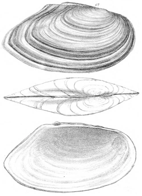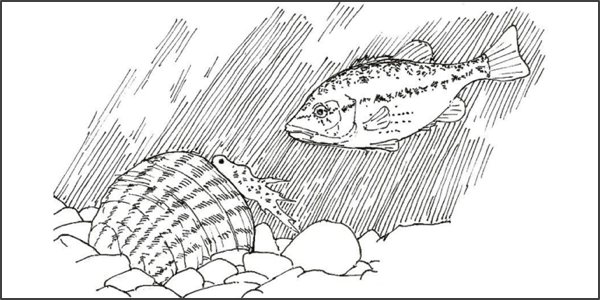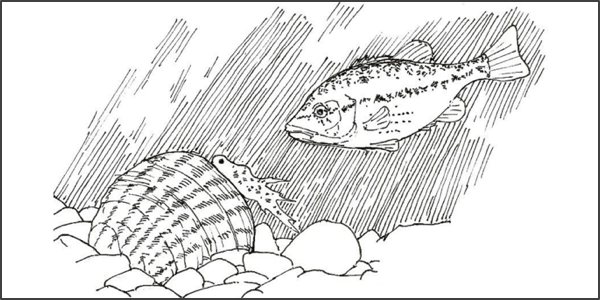Everyone who has ever floated the Buffalo River is familiar with freshwater mussels. Their shells litter the gravel bars and living mussels can be seen embedded in the rocks in riffles. Although most of us enjoying the Ozark out of doors think of these “river clams” as peripheral to our activities, the lowly mussel has played an inordinate role in our local economic history. This little creature has had a strong influence on industry as well as ecological management in Arkansas, serving as both an economic resource and an ecological management problem.
The industry part is nicely summarized in an article in the March-April 2017 issue of Arkansas Wildlife. It all started with a late 1800’s pearl rush after the discovery of valuable pearls in White River mussels. In the meantime, Arkansas mussel shells were found to be a valuable source of mother-of-pearl goods in the manufacture of buttons. New cutting techniques and President Harrison’s protective tariff bill spawned a surge in button manufacturing based on blanks cut from White River mussels. The industry lagged during the depression, but then surged again when buttons had to replace zippers during WWII metal rationing. After that, the Japanese cultured pearl industry found that “seeds” cut from Arkansas mussel shells were the ideal particles to use to start high-quality pearls growing in oysters. By then the mussel market demand had used up all the easy pickings, and harvest required diving or dredging in deeper water.

These days the demand for Arkansas mother-of-pearl has slackened but other factors threaten our native mussel species. Impaired water quality and enhanced silt deposition from eroding farmlands have taken their toll. But the unusual life cycle of mussels really contributes to their peril. Mussels disperse their eggs by tricking fish to do the work for them. Some mussels expose a kind of lure to attract predatory fish. This little flap of tissue is designed to look like a little bait fish, complete with eye spots and fluttering fins as shown in my figure. When a hungry bass or catfish attempts to seize the lure, the mussel squirts a stream of larvae into the fish’s mouth. The larvae attach themselves to the gills of their host where they are exposed to food particles taken in by the circulation of water through the gills. The young mussels eventually drop out of the fish onto a new home in the river gravels. The problem for the mussels is that individual mussel species are dependent on individual species of fish for their propagation. The construction of dams on the main stream of the White River has converted long stretches of the river from warm- to cold-water fisheries. That has disrupted the life cycles of certain warm-water fish that now no longer ascend tributaries such as the Buffalo to spawn. That disruption has placed a number of mussels on the endangered species list. As a result, the lowly mussel has joined the famous snail darter as a little creature than can stand in the way of major river “improvement” projects. In the meantime, Buffalo River fishermen are pleased that the National Park Service has undertaken a program to stock catfish in the Buffalo as a way of preserving a healthy mussel population.

A curious bass fingerling about to be tricked into becoming a brood shelter for mussel larvae.

